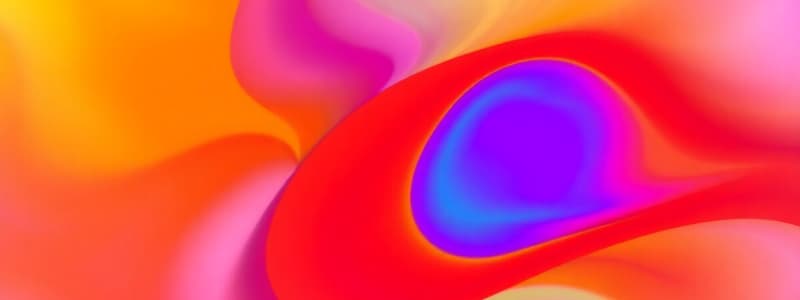Podcast
Questions and Answers
What defines monochromatic color harmony?
What defines monochromatic color harmony?
- The use of two or three adjacent hues together.
- Colors that are completely unrelated in hue.
- A combination of colors from opposite sides of the color wheel.
- A mix of multiple tones and hues of a single color. (correct)
What are adjacent color harmonies based on?
What are adjacent color harmonies based on?
- Colors from different ends of the color spectrum.
- Colors that lie next to each other on the color wheel. (correct)
- Mixing two unrelated colors.
- Only using shades of gray.
In color theory, what is a complementary color harmony?
In color theory, what is a complementary color harmony?
- Colors that are directly opposite each other in the color cycle. (correct)
- Colors that share similar emotional meanings.
- Colors that are analogous in the color wheel.
- Colors that blend smoothly when combined.
Why is it important for artists to consider the psychology of colors?
Why is it important for artists to consider the psychology of colors?
Which of the following is NOT a type of color harmony mentioned?
Which of the following is NOT a type of color harmony mentioned?
Flashcards are hidden until you start studying
Study Notes
Related Color Harmonies
- Monochromatic: Uses variations of a single hue, encompassing different tones and shades.
- Adjacent/Neighboring: Utilizes two to three hues that are located next to each other on the color wheel.
Contrasted Color Harmonies:
- Complementary: Pairs colors that are directly opposite each other on the color wheel, creating a high-contrast effect.
Color Psychology in Art
- Artists should consider the psychological and emotional connotations associated with different colors.
Studying That Suits You
Use AI to generate personalized quizzes and flashcards to suit your learning preferences.



